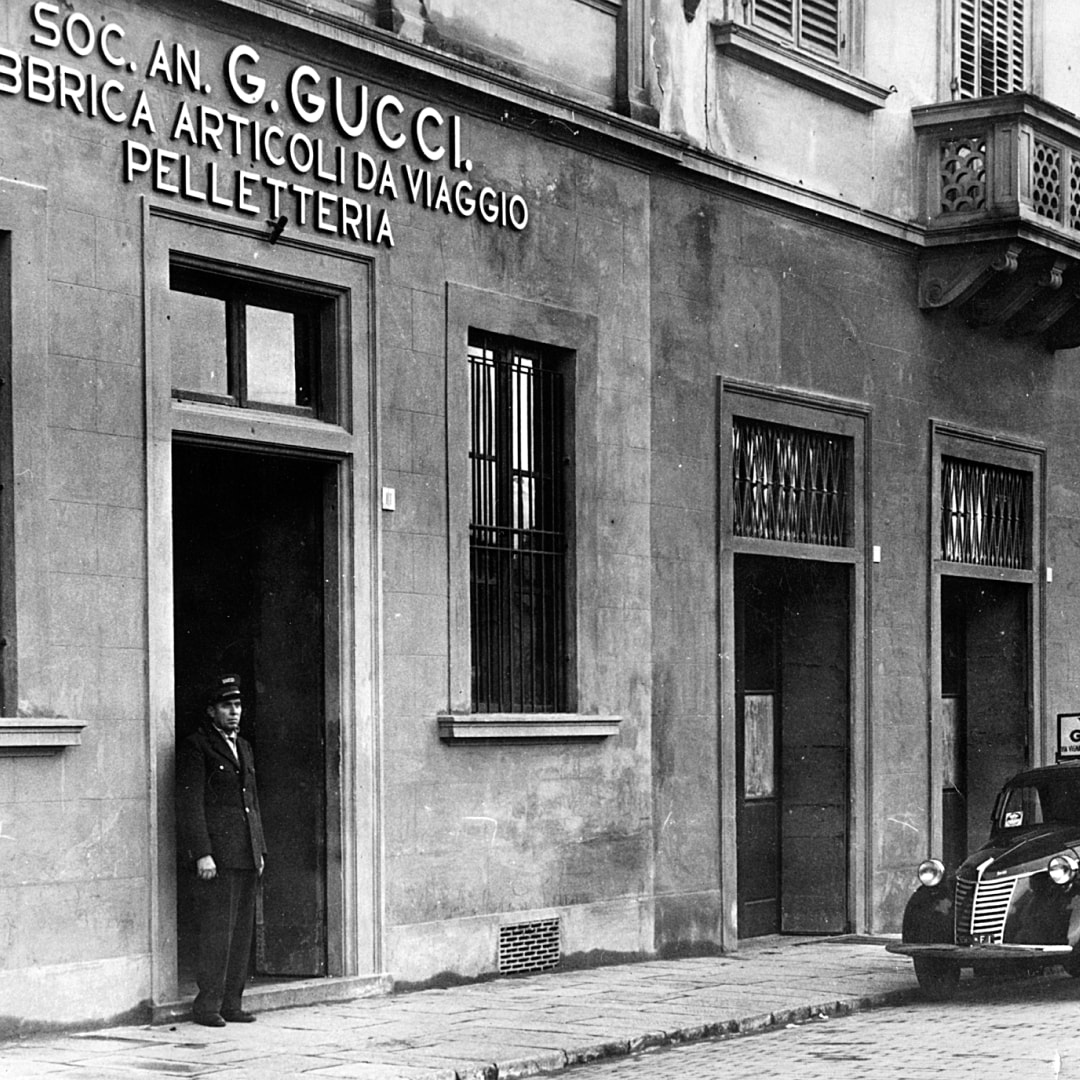

Gucci workshop, Lungarno Guicciardini 11, Florence, 1940s | Gucci Archive
History of Gucci
Since its founding in 1921, Gucci has transformed from a single shop opened on a side street in Florence to its position today as a world-renowned symbol of Italian craft, visionary creativity, and innovative design. Both mirroring and defining the decades that brought it forth, the House's history has itself influenced fashion and culture in indelible ways throughout the 20th and 21st centuries.
The House's founder, Guccio Gucci, was born in Florence on March 26, 1881. In his youth, he moved to London, where he began working as a porter at The Savoy hotel in 1897. Inspired by his observations of the jet set there, he returned to Florence in 1902 with the dream that one day luggage would bear his name, and, in 1921, he opened the first Gucci boutique on Via della Vigna Nuova.
Gucci represents the pinnacle of Italian artisanal excellence and its designs are unsurpassed for their quality and attention to detail. Following the House’s centenary, Gucci continues to redefine luxury while celebrating creativity and innovation through its collections of ready-to-wear, leather goods, shoes, bags, jewelry, watches, décor, and more.

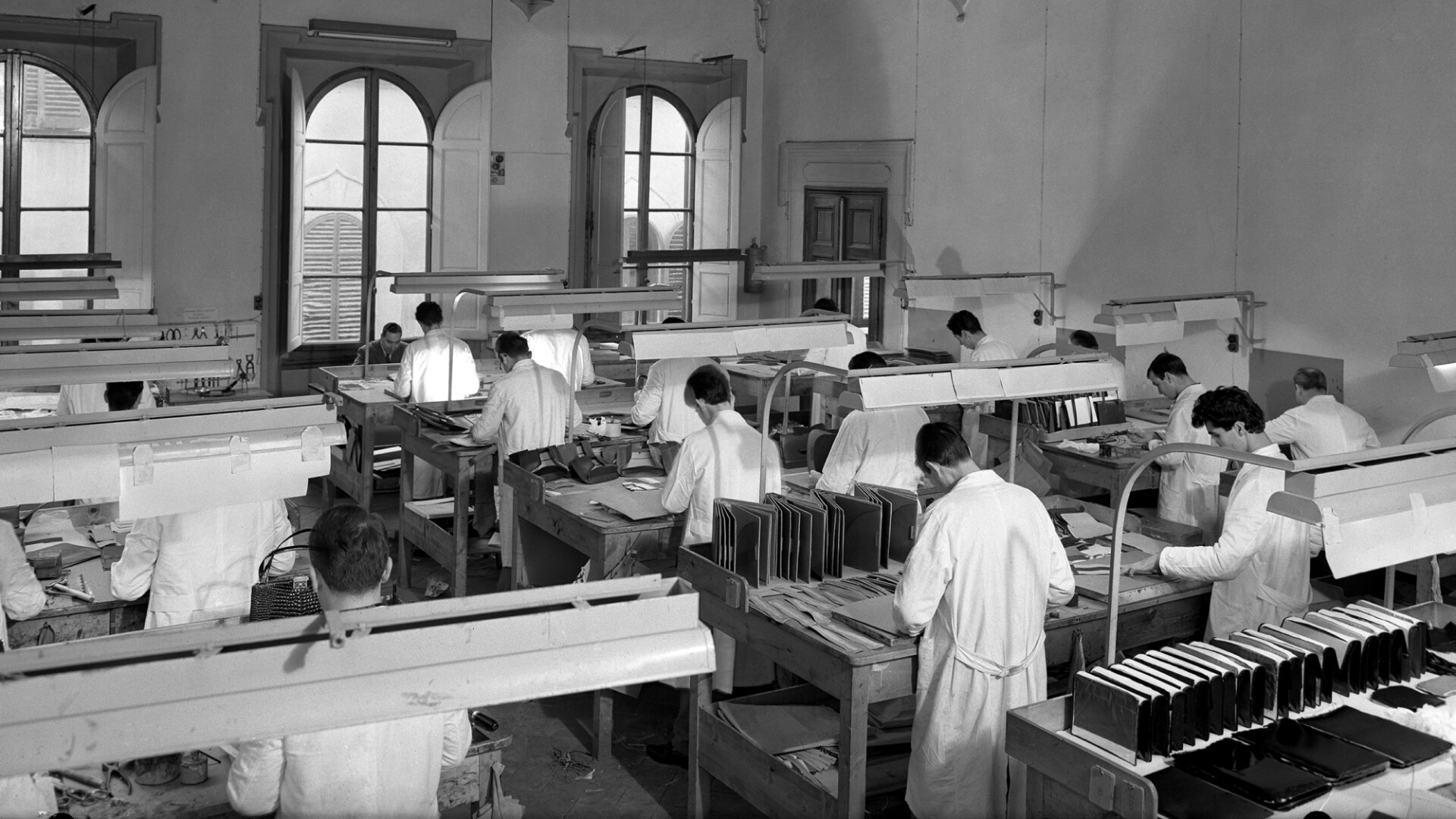
Artisans in Gucci workshop, Florence, 1953 | © Archivio Foto Locchi Firenze
Gucci: a Timeline
Spanning more than a century, the history of the House reveals a vision in continuous evolution. Each decade holds a series of milestones, defining the brand's transformation from a small luggage atelier to a global leader in luxury fashion.

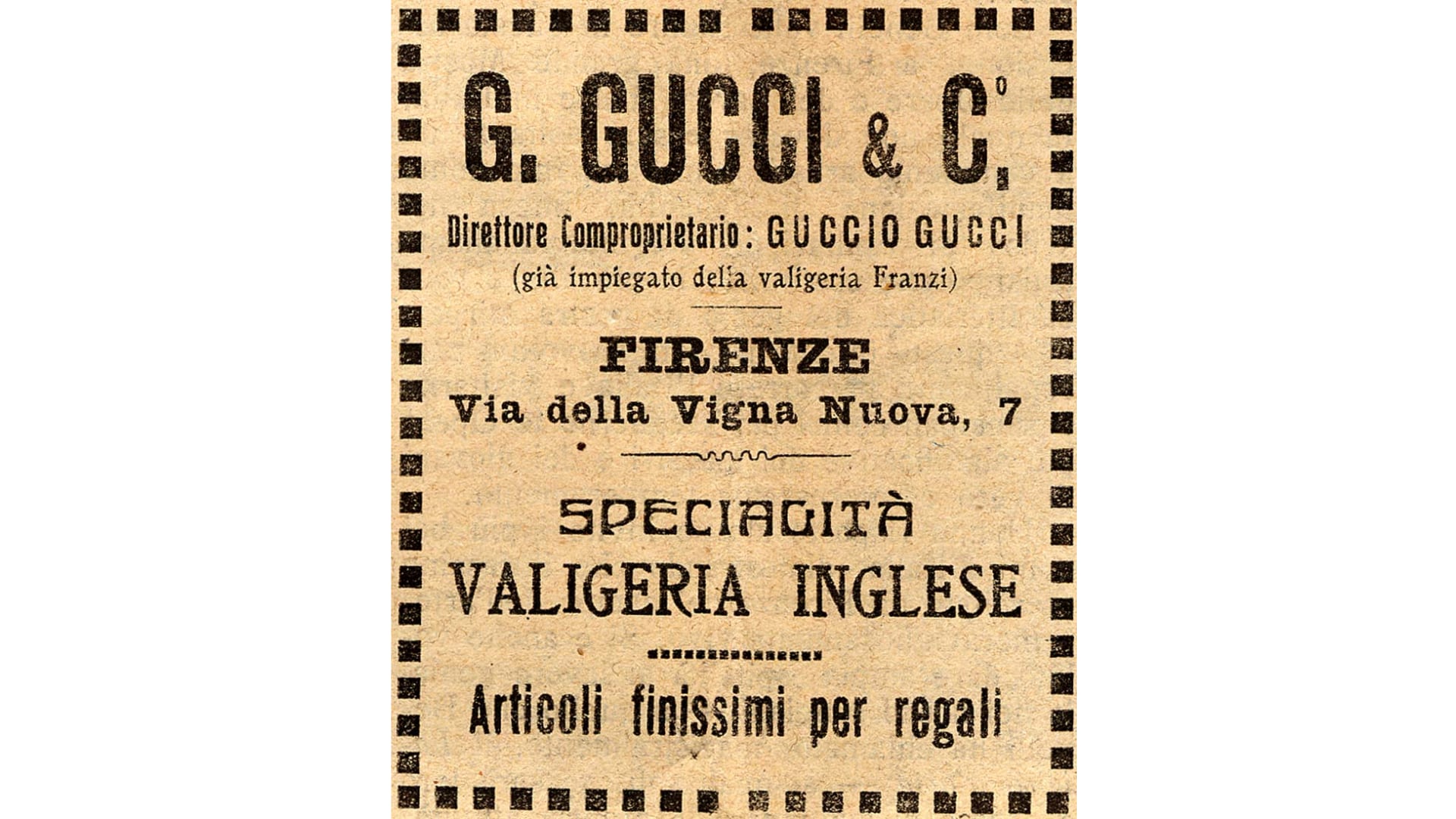
Gucci advertisement for luggage, 1922 | Gucci Archive
1920s & 1930s
Inspired by his experience as a porter at The Savoy hotel in London, Guccio Gucci established his eponymous artisanal luggage atelier in 1921 on Via della Vigna Nuova in Florence. His vision combined exceptional Tuscan materials and craftsmanship with the elegant English aesthetic. These early years established the brand's origins in the world of travel and exploration, which have remained intrinsically linked to Gucci's heritage.
The late 1930s saw the introduction of canvas into the offering to provide enhanced durability. The Diamante fabric emerged and became one of the first distinctive elements of the House with its emblematic diamond motif. This was a precursor of the GG monogram canvas still featured today on a selection of bags.

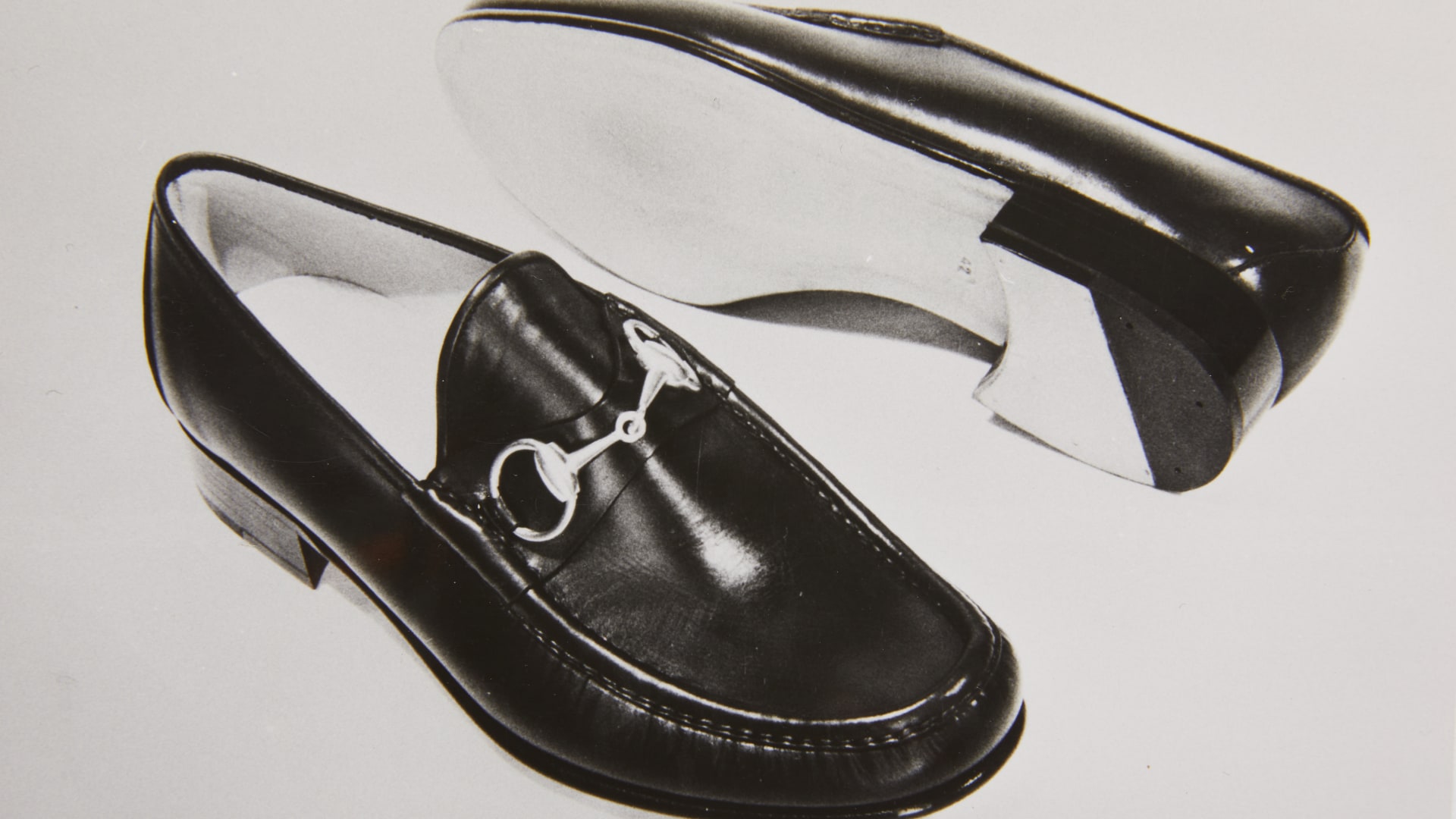
Loafer production card, 1950s | Gucci Archive
1940s & 1950s
A need for creativity and resourcefulness in the 1940s led to the development of enduring House codes. Amid Italy’s post-war era when traditional raw materials were in short supply, a visionary Guccio Gucci turned to the lightweight and durable bamboo in 1947. Through innovative craft techniques, Guccio and his Florentine artisans created the Bamboo bag, the predecessor to the House’s iconic Bamboo 1947 handbag.
1953 was a pivotal year for the House, marking Gucci’s expansion outside of Italy with its first store in New York City. This was also when it introduced footwear, most notably the Horsebit 1953 loafer defined by an equestrian accoutrement that Gucci began using earlier in the decade to evoke the life and style that surrounded horseback riding. The emblem was continuously reinterpreted, with the Horsebit 1955 bag referring to the year its specific version of the hardware appeared in Gucci's collections. Back in Florence in 1953, the House purchased the historic Palazzo Settimanni as the site for its growing artisanal production in the heart of the city.

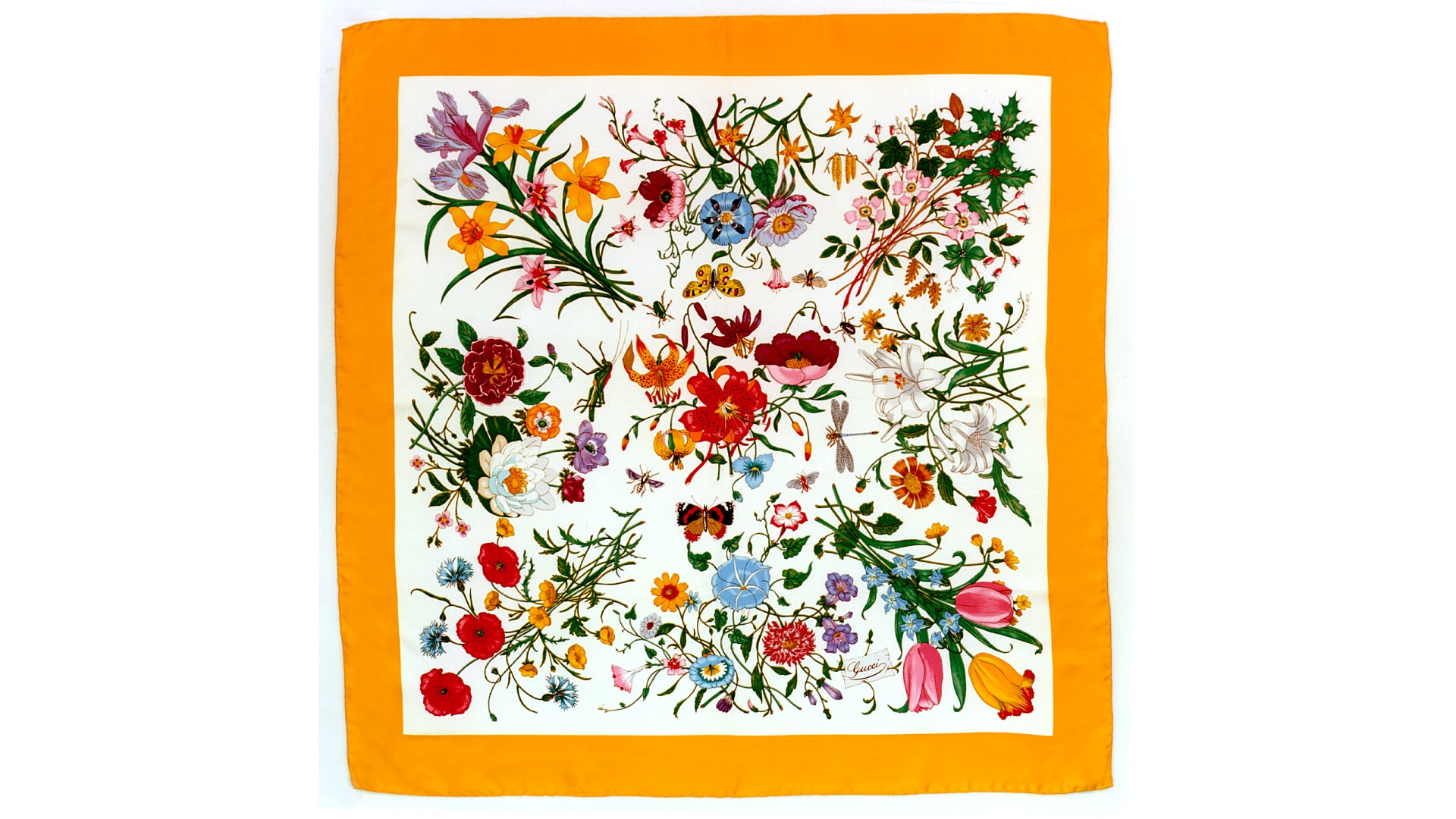
Silk scarf with Flora motif, 1960s | Gucci Archive
1950s & 1960s
As Gucci continued to grow rapidly, the brand's influence spread to an international clientele of jet setters, Hollywood stars, dignitaries, and socialites. Signature products and prints emerging during this period included the predecessor to the Jackie 1961 bag, the GG monogram, and the Flora motif.


Gucci store in Florence, 1980 | © Archivio Foto Locchi Firenze
1970s & 1980s
After Gucci began producing ready-to-wear in the mid-1960s, it opened its first clothing-dedicated store at 699 Fifth Avenue in New York City in 1972. The 1970s also saw the beginning of its collection presentations, frequently set at the St. Regis.
In 1981, the House debuted a Flora-inspired collection at the Sala Bianca in Florence during the fashion shows at Palazzo Pitti, the predecessor to Milan Fashion Week. During this period, Gucci also grew its selection of lifestyle items with board games, tennis gear, umbrellas, dog carriers, and décor.
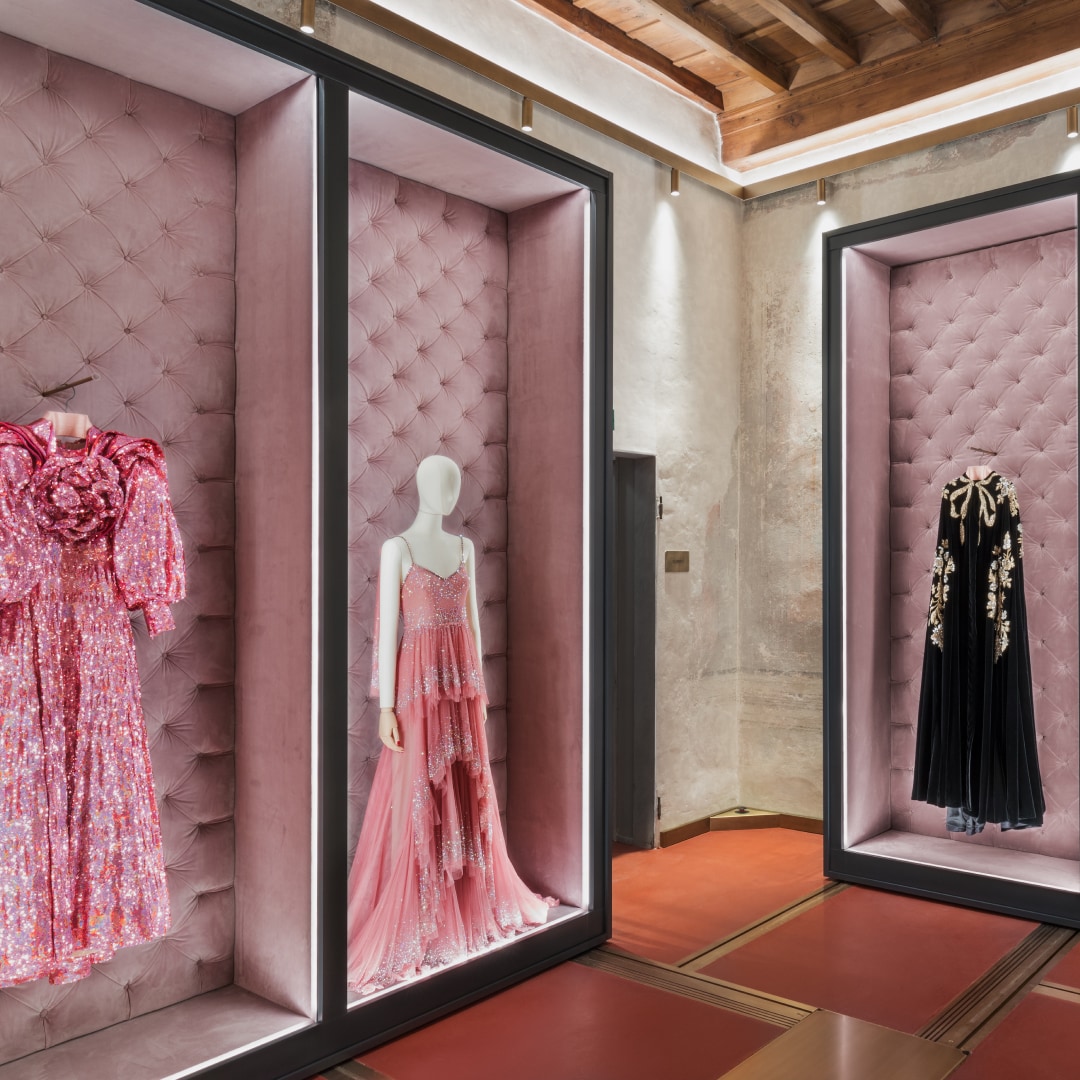

Gucci Archive in Palazzo Settimanni, Florence, 2021
1990s & 2000s
The end of the 20th century marked the beginning of an era in which designers were called upon to bring their unique perspectives to the brand as creative directors:
1994: Tom Ford
2006: Frida Giannini
2015: Alessandro Michele
2023: Sabato De Sarno